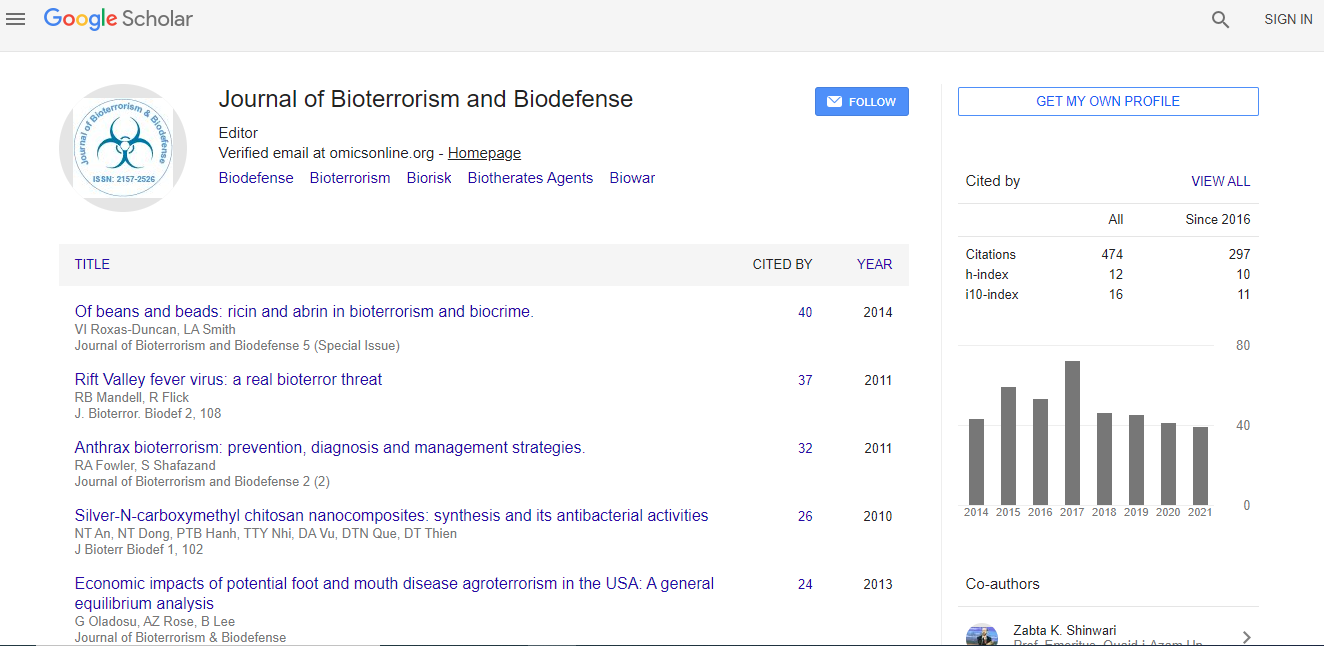Research Article
All Hazards Receipt Facility (AHRF) Testing Algorithm Modifications for Enhanced Screening and Safety
Michael J Perry1*, Alan J Antenucci1, Cassandra D Kelly-Cirino2, Monica Heyl3, Kenneth M Aldous1, and Christina T Egan1
1New York State Department of Health-Wadsworth Centre, 120 New Scotland Avenue, Albany, NY 12208, USA
2DNA Genotek INC, 2 Beaverbrook Road, Kanata, Ontario, Canada
3Monica Heyl & Associates, LLC, P.O. Box 152, Joppa, MD 21085, USA
- *Corresponding Author:
- Perry M
New York State Department of Health-Wadsworth Centre
120 New Scotland Avenue, Albany
NY 12208, USA
Tel: 518-402-4455
E-mail: michael.perry@health.ny.gov
Received Date: November 03, 2015; Accepted Date: February 01, 2016; Published Date: February 08, 2016
Citation: Perry MJ, Antenucci AJ, Kelly-Cirino CD, Heyl M, Aldous KM, et al. (2016) All Hazards Receipt Facility (AHRF) Testing Algorithm Modifications for Enhanced Screening and Safety. J Bioterror Biodef 7:139 doi: 10.4172/2157-2526.1000139
Copyright: © 2016 Perry MJ, et al. This is an open-access article distributed under the terms of the Creative Commons Attribution License, which permits unrestricted use, distribution, and reproduction in any medium, provided the original author and source are credited.
Abstract
After the terrorist events of 2001, it became rapidly apparent that a comprehensive laboratory detection and response capacity was urgently needed. In the past decade significant work has been done at the local, state and federal level to increase our nation’s emergency response framework. An integral part of this system was the development and construction of the All Hazards Receipt Facility by the Department of Homeland Security. The AHRF is a mobile, selfcontained laboratory designed to screen uncharacterized suspicious substances for chemical, radiological, nuclear, and explosive threats prior to acceptance at a Laboratory Response Network facility, or other testing laboratory. The Wadsworth Centre, New York State Department of Health was one of two sites selected to evaluate the prototype AHRF unit and exercise the testing algorithms for rule out of acute hazards. The original testing algorithm, developed by the Department of Homeland Security and Environmental Protection Agency, has been revised and updated by the Wadsworth Centre’s Biodefense Laboratory. The improved screening protocol enhances the safety of laboratory staff, mitigates hazards that could cause serious damage to the facility and increases public safety. In addition, the modified testing algorithm was developed to streamline sample testing. The changes have significantly decreased result turnaround- times, allow for increased sample throughput thus enhancing workflow. The All Hazards approach to sample analysis requires comprehensive testing of multiple threats with minimal sample destruction to ensure sufficient sample remains for both evidentiary and confirmatory testing. Our screening protocol combines non-destructive handheld detectors and limited sample volume colorimetric test kits to achieve this goal.

 Spanish
Spanish  Chinese
Chinese  Russian
Russian  German
German  French
French  Japanese
Japanese  Portuguese
Portuguese  Hindi
Hindi 